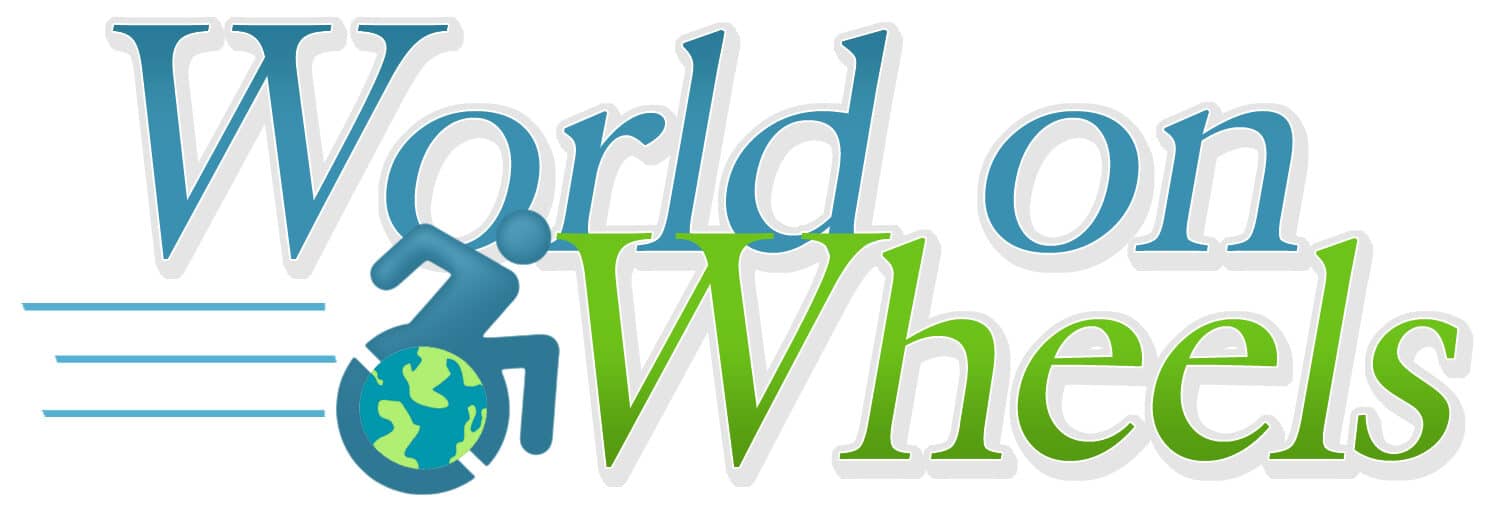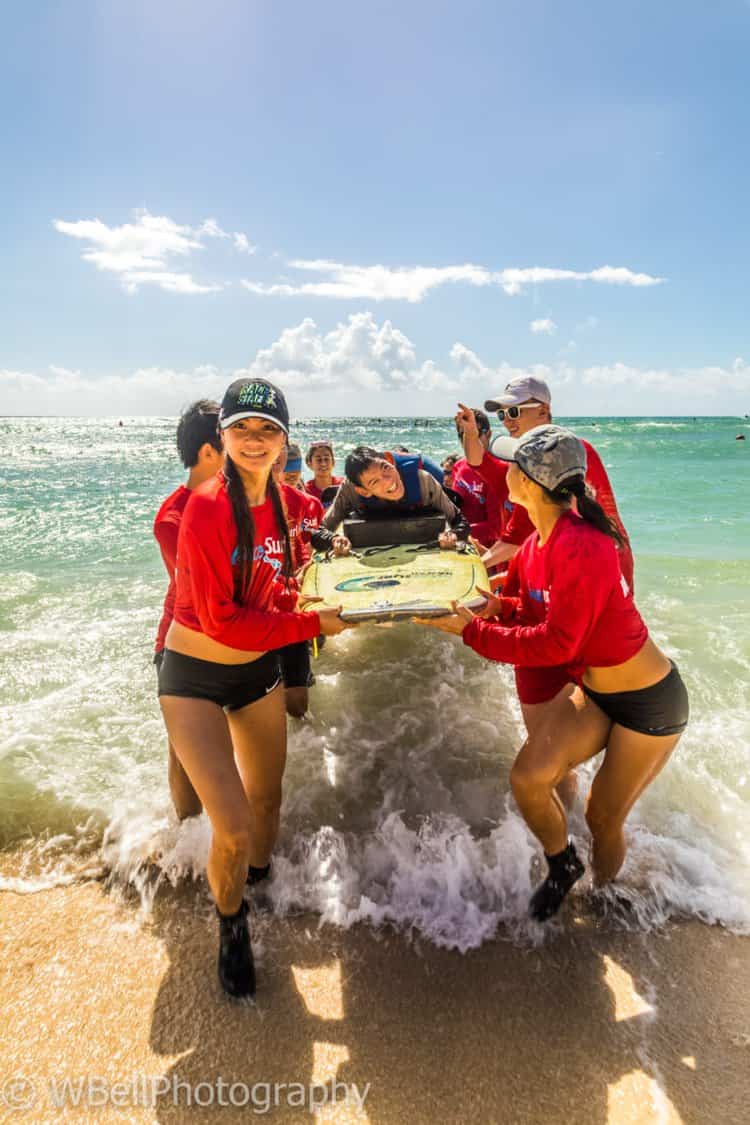AccesSurf: What You Need to Know About Adaptive Surfing on Oahu
You don’t even have to visit Hawaii to know that surfing and being in the water in general is a huge part of everyday life on the islands. One organization, AccesSurf, is helping to make surfing more accessible to people of all abilities. I had a chance to speak with Ann Yoshida, a member of AccesSurf and paralympic athlete, and am happy to share what I learned about this great group so that you’ll have everything you need to know about adaptive surfing on Oahu.
Adaptive Surfing on Oahu
Who is AccesSurf?
If you talk to any surfer, they will tell you about how surfing is not only a sport, but a sort of spiritual connection with the ocean. It’s like a second home and a way to connect with nature. AccesSurf believes that everyone should have this opportunity to connect, no matter what their abilities.
Since 2006, AccesSurf’s goal has been to empower people of all abilities by helping them get back onto the beach and into the water. They also strive to create an all-inclusive community where everyone can feel like they belong. Every month AccesSurf holds events on Oahu for locals and visitors alike so that they can not only enjoy adaptive surfing, but get to know each other and know that they are not alone. There are also separate events for veterans and wounded warriors.
What is Adaptive Surfing?

Adaptive surfing can look different depending on each individual’s needs. Sometimes, it involves using special equipment or different positions that allow people with different abilities to surf and other times it involves another person assisting in paddling out and helping to maintain balance on the board. There is no “one size fits all” in adaptive surfing.
Like you, I had many questions. Ann Yoshida was kind enough to let me interview her so that I can pass on this valuable information. This is what I learned.
What Types of Adaptive Equipment Are Used?
Ann: We have something for everyone. Most of our equipment is custom made so sometimes we have to get out the foam and duct tape. We cover paddling, surfing and swimming so most of our equipment is centered around transfers, seated balance, gripping, positioning. It’s hard to list everything.
Are There Any Requirements or Things That Would Limit a Person’s Ability to Participate in Adaptive Surfing?
Ann: If there is a will, there is a way. We can adapt most factors to get a person in the water participating. We profile the person to gain a better idea of the social, environmental, temporal and equipment needed to safely get a person engaging in the activity. We also look at a person’s physical, sensory, communication, psychosocial functions to help facilitate a good fit in engagement of the activity.
In general, I would say that people with immediate medical conditions that are triggered by water, activity or social engagement should observe first and start slowly. Caution is used if the person has open wounds, compromised airway, seizures, sensory avoidance.
Aside from the general life sustaining abilities such as breathing, social engagement etc., our requirement is that each person has the desire to get in the water. Out of the 16 years that I have been doing this with AccesSurf, I saw 1 or 2 people make the call not to engage due to their (Physical) functional limitations.
What Types of Training Do Volunteers Receive?
Ann: Our training is pretty robust. We have the task of bringing the average community member up to an advanced level throughout their experience. There are many other safeguards such as profiling and scheduling to gain a better idea of the person’s needs and the volunteers’ abilities and comforts to match up a pair to surf, swim and paddle.
All of our volunteers attend our new volunteer training course that covers the basics of communication, organization, responsibilities, basic equipment, basic transfers and logistics. Volunteers have access to a digital training manual that I wrote throughout the years and yearly advanced volunteer training and leadership training.
Most of the water positions get trained in lifeguarding or water safety. Each section does one on one training with volunteers on the day of all events. All of our key leaders are trained additionally with on-the-job training, one on one with the leader of the area. We also participate in safe sports training and cultural training once a year.
How Often are Your Adaptive Surf Programs Held on Oahu and How Many Participants Can You Accommodate?
Ann: Due to state regulations as a response to COVID, the number of people we have been able to accommodate has decreased but we usually take out a group of 50 people at events. So about 20 participants, and 25-30 volunteers. Our events are monthly from 8-2pm.
What Benefits Have You Seen for the Participants in this Program?
Ann: The benefits are wide ranged. I would say physical, social, psychosocial, communication, cultural and spiritual benefits. AccesSurfers’ engage in life, build a community and move in our organization. We did a needs assessment a few years back, and we realized that participants are not the only ones that benefit. We saw benefits from family members, volunteers and community members. There is power in accessibility for everyone.

What Do Volunteers Like Most About Participating in the Program?
Ann: They love to share the Mana (power) and change. Our volunteers are a unique mix of people, and it never ceases to amaze me how they benefit. Some love to feel like they give back, some like to learn from us, some like to build a community, some like to find love, some like to belong, some like to observe, there are endless possibilities.
How Do I Sign Up for Adaptive Surfing Events on Oahu?
If you are ever in Hawaii and would like to join one of these amazing events, make sure to check out when and where they are being held at www.accessurf.org. Before attending, you’ll need to complete a waiver form and register for the event.
The waiver form is found online and you can register for your desired event by going to the event calendar and clicking on the event of your choice (this will take you to the registration form). The registration form will help to assess how comfortable you are in the water, how you would like to participate and if you are okay with volunteers assisting you.
I would have loved to try adaptive surfing… it sounds amazing! Unfortunately, being on a ventilator means I can’t go into the water. I’m so glad that I learned about this program, however, as it sounds like a great opportunity for others.
My hope is that more organizations will follow in AccesSurf’s footsteps and create incredible opportunities like this for people of all abilities. Until then, what a great excuse to go to Hawaii! I hope that my guide on what you need to know about adaptive surfing on Oahu has given you some inspiration to not only go to Hawaii, but try a new sport like adaptive surfing.



